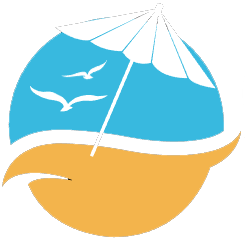There is no denying the fact that our planet is facing a multitude of environmental challenges, from climate change to pollution to deforestation. These issues not only threaten the health and well-being of our ecosystems, but they also disproportionately impact marginalized communities, including Indigenous peoples.
Indigenous communities have long served as stewards of the land, utilizing traditional knowledge and practices to sustainably manage natural resources. In recent years, there has been a growing recognition of the crucial role that Indigenous peoples play in promoting environmental justice and conservation, particularly in coastal areas.
Coastal lands and waters are among the most biodiverse and productive ecosystems on the planet, providing essential resources such as fish, clean water, and habitat for a myriad of species. However, these areas are also increasingly vulnerable to the impacts of climate change, including sea level rise, ocean acidification, and extreme weather events.
Indigenous communities have a deep connection to these coastal lands and waters, often relying on them for their livelihoods, cultural practices, and spiritual beliefs. For many Indigenous peoples, the health of the land is intricately tied to their own well-being and identity.
In response to the growing threats facing their coastal territories, many Indigenous communities have taken proactive measures to promote environmental justice and conservation. These efforts often involve a combination of traditional ecological knowledge, community engagement, and partnerships with government agencies and non-profit organizations.
One such example is the Quinault Indian Nation in Washington State, which has been at the forefront of efforts to protect and restore coastal ecosystems in the face of climate change. The Quinault people have implemented a range of strategies, including restoring estuaries, monitoring water quality, and developing sustainable fisheries management practices.
Through partnerships with local universities and conservation organizations, the Quinault Indian Nation has been able to leverage scientific expertise and financial resources to support their conservation efforts. This collaborative approach has not only helped to improve the health of coastal ecosystems, but has also strengthened the resilience of the Quinault community in the face of environmental challenges.
In addition to their conservation efforts, Indigenous communities are also advocating for greater recognition of their rights and traditional knowledge in environmental decision-making processes. For too long, Indigenous peoples have been marginalized and excluded from discussions about land use and resource management, despite their unique perspectives and expertise.
Promoting environmental justice for Indigenous peoples requires a more inclusive and participatory approach that respects their sovereignty, self-determination, and cultural values. This means involving Indigenous communities in all stages of decision-making, from planning and implementation to monitoring and evaluation.
By centering Indigenous perspectives and voices in environmental policy and practice, we can ensure that conservation efforts are not only effective and sustainable, but also equitable and just. Indigenous stewardship of coastal lands and waters offers a powerful model for how we can work together to protect the planet for future generations.
Ultimately, promoting environmental justice requires a fundamental shift in how we perceive and value the natural world. We must recognize that all life is interconnected, and that the health of the planet is inseparable from the well-being of all its inhabitants, human and non-human alike.
As we face the urgent challenges of climate change and environmental degradation, we must look to Indigenous communities for guidance and inspiration. Their knowledge, resilience, and deep connection to the land offer a powerful example of how we can live in harmony with nature and promote a more sustainable and just future for all.



